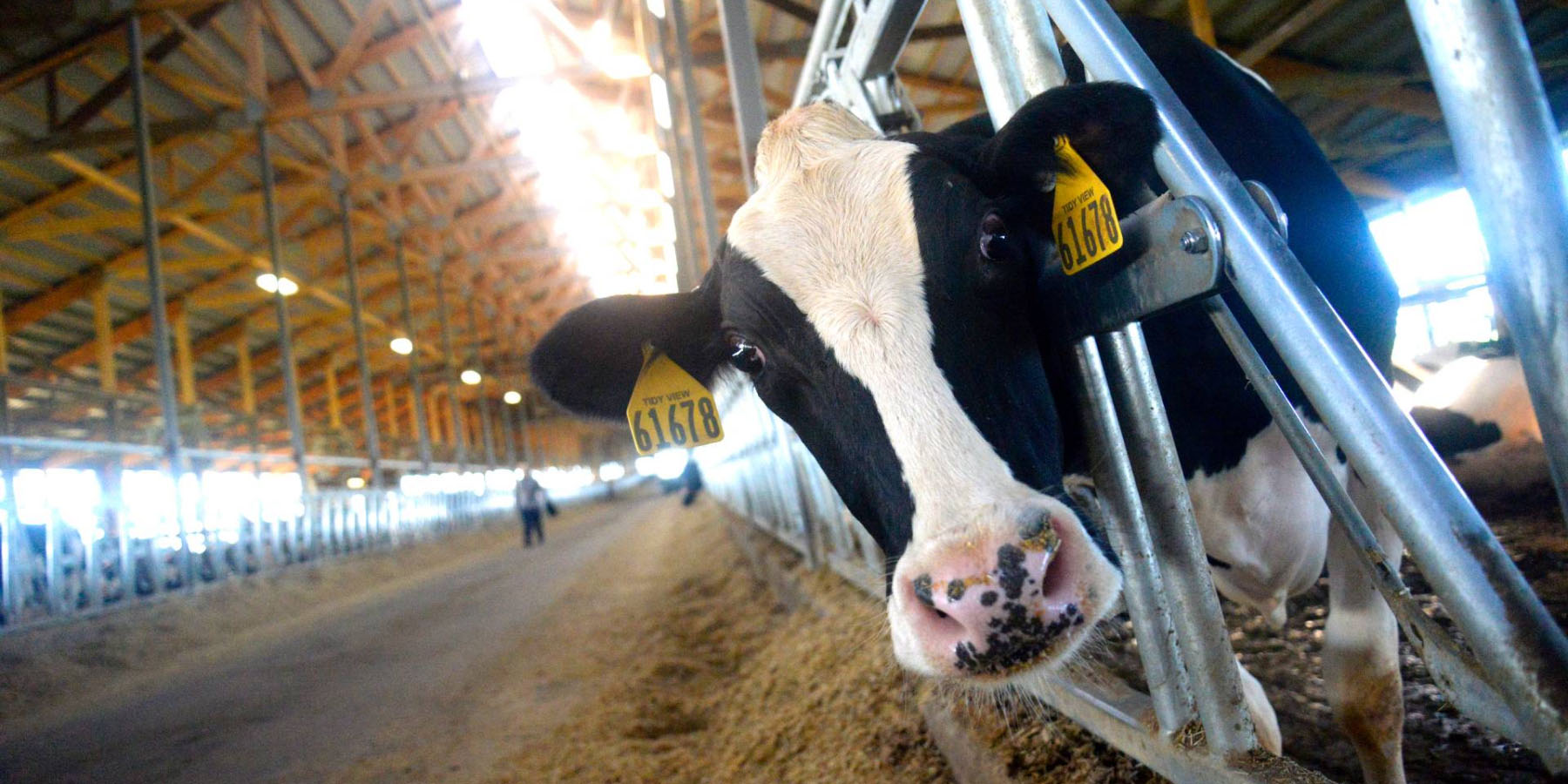
A Cow's Life
Exceptional care means happier cows
Our dedicated farm families take cow care to a higher level
Holstein Cows
Holsteins are typically black & white, with each cow having a unique pattern! Some Holstein cows are “red & white” – red is a recessive gene and occasionally produces a red/white cow. The cows look golden brown, but they’re considered “red.” Holsteins are known for the quantity of their milk. Other breeds, such as Jerseys, are known for high butter fat content in their milk, and lower production.
Jersey Cows
A Jersey’s coat color can range from light brown to dark brown depending on her genetics. They are quite a bit smaller in size than a Holstein cow therefore do not produce as much milk, but they are known for producing the highest butterfat content in their milk.
Herd Mentality
Cows are curious and friendly animals. They like to be in groups, not alone, and that’s why you see them in a herd. Like many animals, cows establish a pecking order – quickly. With change, the pecking order realigns, which can be stressful for the cows.
General Info
Cows spend about six hours eating and eight hours chewing cud per-day. They will spend around four hours a day sleeping, taking very short naps. The girls sleep laying down while chewing cud.
Cows have almost total 360-degree panoramic vision, and they can see color! Cows have a great nose and can smell up to six miles away.
Cows need to have recently given birth in order to produce milk. Cows are bred at approximately 15 months and the gestation period is nine months, the same as a human. Cows like cool temperatures – 50°-60° F – milk production goes down in high temperatures.
Feeding Cows
What a cow eats is very important for her digestion, milk production and milk quality. Milk Source has formulated a special blend of feed to meet all the needs associated with the health and well being of our cows, as well as for maximum milk production. Their feed consists of a mixture of:
- Corn silage
- Sweet corn silage
- Haylage
- Corn
- Soy Hulls
- Whey Permeate
- Canola Meal
- Protein Mix
- Wet cake
Cows are “ruminants” – meaning they have four digestive areas in the stomach – not four stomachs! The cow digests plant-based food by initially softening it within her first, known as the rumen, then regurgitating the semi-digested mass, now known as cud, and chewing it again. The process of re-chewing the cud to further break down plant matter and stimulate digestion is called “ruminating,”
There are a few sayings that have been derived from cows such as:
“Digest an idea”
“Chew the cud”
Ruminate = ponder or think about!
85 percent of Wisconsin milk goes to cheese
